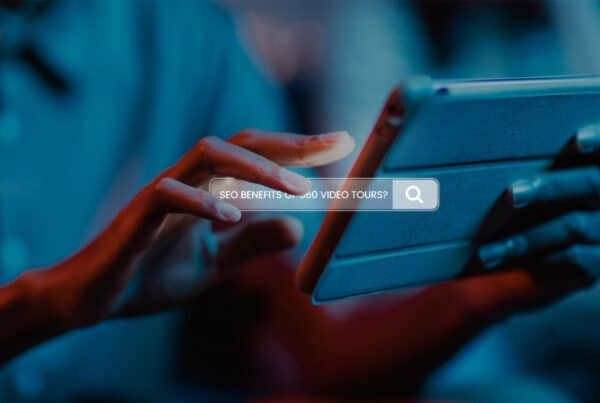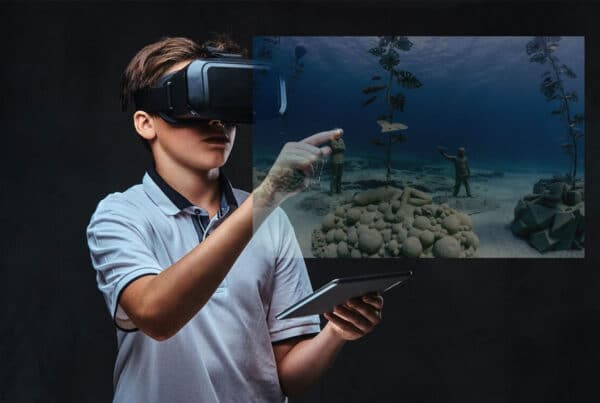
Introduction
In an increasingly digital world, businesses are constantly searching for innovative ways to enhance user experiences and engage customers. One of the most effective tools emerging in this landscape is 360 video tours. These immersive experiences allow potential customers to explore products, services, and environments interactively, providing a unique perspective that traditional media cannot match. This article examines how 360 video tours enhance the user experience, focusing on their benefits, applications across various industries, and best practices for implementation.
What Are 360 Video Tours?
Definition and Technology
360 video tours are interactive multimedia presentations that capture panoramic views of spaces using specialized cameras. Unlike traditional videos that offer a linear viewing experience, 360 tours enable users to navigate through environments at their own pace. Viewers can control their perspective by clicking and dragging or using navigation arrows, creating a sense of presence and immersion.
Key Features
- Interactivity: Users can choose where to look and what to explore, creating a personalized experience.
- Immersion: The ability to look around in all directions enhances engagement and makes the experience more realistic.
- Accessibility: 360 video tours can be accessed from various devices, including smartphones, tablets, and VR headsets, making them widely available to diverse audiences.
Enhancing User Experience with 360 Video Tours
Immersive Exploration
One of the primary advantages of 360 video tours is their ability to provide an immersive exploration experience. Unlike static images or traditional videos that present limited perspectives, these tours allow users to navigate through spaces and appreciate layouts in detail.
- Realistic Representation: Users can visualize themselves in the environment, which fosters a deeper emotional connection. This is particularly beneficial for industries like real estate or hospitality, where potential buyers or guests can fully understand what they are considering.
- Informed Decision-Making: By providing realistic previews of accommodations, attractions, or products, users can assess whether a destination meets their expectations before committing to a purchase. This transparency reduces uncertainty and enhances customer satisfaction.
Increased Engagement
The interactive nature of 360 video tours keeps users engaged longer than traditional content.
- Active Participation: Unlike passive viewing experiences where users simply watch a video, 360 tours encourage active participation. Users can explore points of interest at their own pace, zoom in on specific areas, and interact with various elements within the tour.
- Extended Dwell Time: Research shows that immersive content leads to longer engagement times on websites. Visitors who interact with 360 tours are likely to spend more time exploring offerings, which can lead to increased interest and conversion rates.
Enhanced Accessibility
360 video tours play a vital role in making experiences more accessible for individuals with varying abilities.
- Inclusive Experiences: These tours allow users to explore destinations or products without physical exertion. This feature is particularly beneficial for individuals with mobility challenges or those unable to travel due to health concerns.
- Remote Exploration: For those unable to visit locations in person, 360 video tours provide an opportunity to experience different environments virtually. This remote exploration satisfies wanderlust while accommodating individual circumstances.
Comprehensive Information Delivery
Another significant benefit of 360 video tours is their ability to deliver comprehensive information about spaces or products.
- Detailed Insights: Users can access detailed information about featured areas directly within the virtual tour. For example, real estate listings may include information about room dimensions or amenities that enhance understanding.
- Comparison Shopping: Customers can use 360 video tours to compare different options—such as hotels or retail locations—helping them make informed decisions based on personal preferences.
Applications Across Various Industries
Real Estate
In real estate marketing, 360 video tours have become invaluable tools for showcasing properties.
- Virtual Open Houses: Agents can host virtual open houses that allow potential buyers to explore homes from anywhere in the world. This accessibility expands the pool of interested buyers and saves time for both agents and clients.
- Highlighting Property Features: Agents can emphasize unique features such as spacious layouts or outdoor areas through interactive exploration.
Hospitality
Hotels and resorts benefit significantly from incorporating 360 video tours into their marketing strategies.
- Showcasing Amenities: Virtual tours allow potential guests to explore rooms, pools, restaurants, and other amenities before booking their stay. This transparency helps guests feel more confident in their choices.
- Creating an Emotional Connection: By providing an immersive experience of the property, hotels can evoke emotions associated with travel and relaxation.
Retail
Retailers are increasingly adopting 360 video tours as part of their online shopping experiences.
- Product Showcases: Brands can create virtual showrooms where customers can interact with products from different angles. This feature is particularly beneficial for items like furniture or clothing that require detailed examination.
- Enhanced Online Shopping Experience: By offering an engaging alternative to traditional product images, retailers can improve customer satisfaction and reduce return rates.
Tourism
The tourism industry has embraced 360 video tours as a means of attracting visitors.
- Destination Marketing: Tourism boards can create immersive experiences showcasing attractions, landscapes, and cultural experiences. This approach helps potential travelers visualize their trips and encourages bookings.
- Virtual Travel Experiences: In light of recent global events that have limited travel opportunities, virtual tours provide an alternative way for individuals to explore destinations from home.
Boosting Sales and Revenue
The impact of 360 video tours extends beyond user experience; they also contribute significantly to sales and revenue generation.
Increased Conversion Rates
The use of 360 video tours has been shown to increase conversion rates across various industries.
- Higher Booking Rates: Properties featuring these immersive experiences often see higher conversion rates compared to those relying solely on traditional photos or videos. Studies indicate that listings with virtual tours receive up to 40% more bookings than those without.
- Upselling Opportunities: Businesses can integrate upselling strategies within the tour by showcasing additional services or products. For instance, hotels can highlight spa services or dining options during the virtual tour.
Enhanced Brand Loyalty
By providing exceptional user experiences through 360 video tours, businesses foster brand loyalty among customers.
- Memorable Experiences: Engaging content creates lasting impressions on users, making them more likely to return for future interactions.
- Positive Word-of-Mouth Marketing: Satisfied customers are more likely to share their experiences with friends and family, leading to organic growth through referrals.
Best Practices for Implementing 360 Video Tours
To maximize the effectiveness of 360 video tours in enhancing user experiences, businesses should consider several best practices:
Invest in Quality Production
High-quality production is essential for creating engaging 360 video tours. Investing in professional-grade cameras and editing software ensures that the final product is visually appealing and polished. Additionally, incorporating multimedia elements such as voiceovers or background music can enhance viewer engagement during the tour.
Keep It User-Friendly
The user experience should be prioritized when designing a 360 video tour. Ensure that navigation is intuitive so viewers can easily explore without confusion. Providing clear instructions on how to interact with the tour will enhance usability and encourage participation.
Promote Across Multiple Channels
To maximize reach and engagement, promote your 360 video tour across various channels:
- Social Media: Share snippets or highlights from the tour on platforms like Instagram, Facebook, or LinkedIn.
- Email Marketing: Include links to the virtual tour in email invitations or newsletters leading up to events or promotions.
- Website Integration: Feature the virtual tour prominently on your website or landing page to attract potential customers.
Update Regularly
Keep your 360 video tours current by regularly updating them to reflect any changes in product offerings or environments. This ensures that potential customers receive accurate information about what they can expect.
Conclusion
In conclusion, 360 video tours significantly enhance the user experience by providing immersive exploration opportunities that engage customers effectively while building trust through transparency. By leveraging this innovative technology across various industries—such as real estate, hospitality, retail, and tourism—businesses can differentiate themselves from competitors while increasing conversion rates. As technology continues advancing and consumer preferences evolve toward interactive content formats, embracing tools like 360 video tours will be essential for businesses looking to stay relevant in an increasingly digital marketplace. By implementing best practices—such as quality production values and user-friendly design principles—companies not only enhance their marketing efforts but also foster deeper connections with their audiences—ultimately leading to increased satisfaction and loyalty in today’s dynamic environment.




